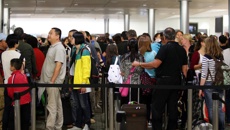
I listened to Jamie Mackay talking on The Country radio show last week about the retail price of a rack of lamb.
Farmers in this country are selling their lambs for about $6 per kilogram. That’s not a lot of money. The average healthy lamb will weigh between 16 and 18 kilos, so in round figures we’re talking about a farmer doing a whole lot of work for about $100 per animal.
But here’s where it gets interesting. While the sale price at the farm gate is at an unhealthy low, the retail price for the finished product, ready to cook, is at a ridiculous high.
As Mackay pointed out on his show, a rack of lamb was selling in a Wellington supermarket for $74 per kilo. So the raw material is $6. The finished product is $74. That’s a heck of a lot of margin crammed into the distribution process.
We’re quick to blame the supermarkets for price gouging and that’s exactly what happened after the story broke.
But just last weekend I was away with a group of mates. On Saturday night, we went to dinner at a Palmerston North restaurant. On looking at the menu I saw something that I hadn’t noticed before. All the main courses were $50 or more. That’s without the sides or veges that were going to be an additional $12 a piece. All the desserts were $25.
Not that long ago restaurant mains were in the high 30s and desserts maxed out at $15. A great eye fillet may have gone over the $40 mark but that was it. As we came out of the Covid lockdowns that was where prices sat. But this is another level.
When our restaurants serve chicken fillet or pork belly is $50, we need to take notice. As a food-producing country, someone needs to ask “what the hell is going on?”.

But it gets worse. As our main courses arrived, my mate across the table, having ordered the lamb, was appalled to see one - yes one – normal-sized lamb chop on his plate. He looked further up the table where another newly arrived dinner sat in front of the other guy who ordered the lamb. Same thing. One lamb chop. There were mushrooms and some sauce, but that was it. One lamb chop. Fifty dollars.
While we’re quick to get stuck into the supermarkets, something else must be going on. Restaurants don’t buy their meat from supermarkets. There will be a process of ”middlemen”, from the original buyer of the hogget to the wholesaler who supplies supermarkets and restaurants. Somewhere in that chain, one of three things must be happening.
First, the supply chain could be flawed and inefficient. Second, there could be too many sets of hands in the process. I’m not sure why you’d need more than one middleman between the farmer and the retailer. Or third, someone is running a food distribution business with bigger margins than the IT industry.
The problem is this. Farmers are slogging their guts out and paying higher mortgage rates and higher wages to workers, just like the rest of us. But no one is allowing them to put their prices up to help them cope.
In the meantime, at the retail end, the prices are going up like crazy.
As I’ve written before in this column, our government of the past six years grossly underestimated the impact of the annual increases to the minimum wage while they were in power. The minimum wage worker, who is working 40 hours per week, is earning an additional $278 per week as a result.
And it’s not over yet. Wage increases continue across the economy. The outgoing government just approved another round of increases, of up to 30 per cent, for yet another group of government workers. All these increased costs will continue to drip feed into our economy and make it even more difficult to pay the bills.
That’s great for workers on the receiving end. But let’s not forget that the cost of wages is sprinkled across every product and every service we buy. Restaurants and supermarkets are full of those people, and they all need to be paid. The supply chain that delivers product to those restaurants and supermarkets is littered with wage earners as well. Each one of them is earning more than they were. And we, the consumers, must pay.
And remember the farmers? They are paying workers more too. They’re just not getting anything back in return.
So, we have a new grocery commissioner and, believe it or not, he has 23 staff. Let’s hope that they get to work and start looking in the right places.
Bruce Cotterill is a company director and adviser to business leaders. He is the author of the book, The Best Leaders Don't Shout, a regular NZ Herald columnist and host of the Herald’s new podcast, Leaders Getting Coffee. www.brucecotterill.com
Take your Radio, Podcasts and Music with you









